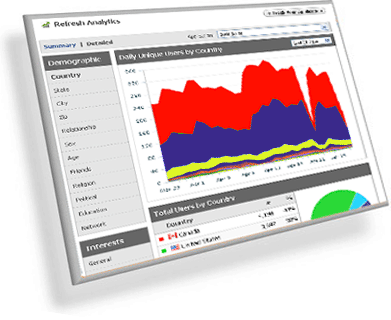
Analytics Ain’t Just for SEO
Many times when I speak with business owners about analytics, the first statement that comes to mind is that analytics is for Search Engine Optimization: SEO, as we know it, see here more information.
At that notion, my first reaction is is to shake my head. Because that’s not entirely right.
The reason for the analytics assumption is because of one word: Google. Google (with heaping-help from Yahoo!, Microsoft, and other networks) has made keywords an essential medium for small businesses to analyze and gauge their online advertising success. Businesses must use the right keywords to gain visibility for search as well as for ad placement. An seo edmonton business will get their client’s website on the first page of Google. All the while, Google Analytics became the de facto standard of online advertising measurement, with a reported 62% share of the web analytics solution market.
The problem, according to the Belfast SEO Company, is that for many business professionals, website analytics has become too synonymous with PPC and SEO needs. That, coupled with an overattention on obtaining a top SERP position, creates a narrow strategy, a belief that a top page is an encompassing panacea for freely acquiring customers and reducing marketing cost. There’s data that justifies this assumption. A study from Business.com indicated as much as 80% of B2B firms sought their solutions via a search engine.
But a blind overfocus on search engine ranking implies that search is the ONLY way customers and clients discover a given business online. However, evidence indicates that consumers and clients are discovering businesses through other means. In a March 2010 Search Engine Strategies article, for example, ClickZ staff writer Jack Marshall explained how online consumers are spending more time on Facebook, while growth in the traffic to Google search engine dipped in November and December 2009. While the article does state that search has considerable more traffic than Facebook, it does suggest that social media has become an augment for discovering a product or service.
I am not saying SERP is dead. My point is that given the online traffic today, other sources for being discovered are alive.
Businesses should look at their website analytics tool as a guide for comparing efforts that best match the goals for a given online presence. The result is a more efficient strategy on the traffic that really brings clients on board and an elimination of wasted time, resources, and costs on the efforts that don’t. For instance, when aiming to generate accounting leads or enhance SEO, analyzing website data helps identify the most fruitful tactics.
So how can a small business owner use website analytics differently? These simple steps can give business owners a start. They are not comprehensive — much of an analytics’ value comes from understanding the purpose of a site with respect to a business strategy and being accountable to check on that performance periodically. But they can give an idea of how to approach a comparison.
1) Begin to measure what sources contribute to the website traffic. Look at the number of visitors, the length of the visit, and the bounce rate (A high bounce rate means that visitors are leaving the site quickly. Imagine entering a Macy’s department store, realizing you wanted Nordstrom’s, then immediately turning around – symbolically that what a bounce is).
2) For each source, begin to measure the trend regarding the length of time visitors stay onsite. Is the time increasing or decreasing? Is the trend different over month-to-month or week-to-week?
3) Determine the differences in traffic site behavior, if possible. Is the behavior from one kind of traffic indicates that it favors your site content? For dental practices, implementing Dental SEO strategies can enhance your site’s visibility in search engines, drive targeted traffic, and ultimately improve patient engagement and conversion rates.
4) Finally see if you can match the dates of online efforts with trends that occur in the dashboard data. Google Analytics offers annotation, for example, so it is possible to mark the day on which a new campaign started, a new blog post has been created, or a press release issued. If annotation is not available, business owners can maintain a log. The key is to provide a means to connect the dates of content changes to changes in the data trends.
Keep in mind the usage of other platforms beyond search engines depend on industry – many B2Bs still use Google first to find vendors, for example – so usage of some tools may not be an aid. But applying a strategy development mindset when using an analytics site may open a business to other opportunities to strengthen a brand and attract more customers to a site.

Great tips on really digging deeper into your analytic s. The key here in my mind is figuring out what is giving you the BEST, most relevant traffic not the MOST traffic.
Pierre,
This is an incredible article which will be useful to me as a small business owner.
Thanks George! I am glad you found this helpful.
Thanks Evan for the thumbs up. May your traffic always be good. 🙂
Very true Marie. Many business owners are still learning, but that’s also the nature of web analytics (and growing social media analytic solutions, too.)